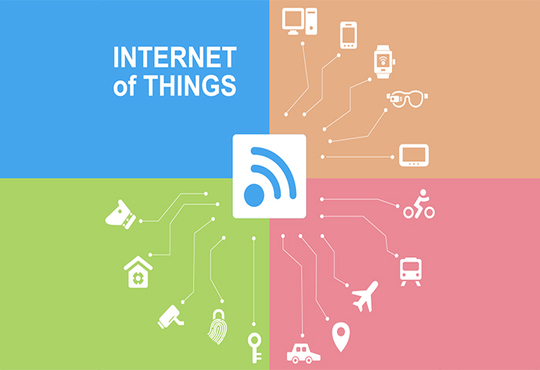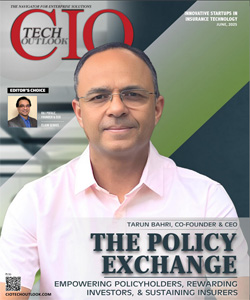Telecom Operators Evolution to Becoming Next Generation IoT Services Provider
Dr Shekhar Tankhiwale, Head of Business and IT Transformation
 The Internet of Things (IoT) represents a huge paradigm shift for Telecom Service Providers (TSPs) in terms of business models, products and business processes. It has also came in as a big opportunity for the Telcos who saw in it possibilities to offset the decreasing voice revenues coupled with stagnant data revenues.
The Internet of Things (IoT) represents a huge paradigm shift for Telecom Service Providers (TSPs) in terms of business models, products and business processes. It has also came in as a big opportunity for the Telcos who saw in it possibilities to offset the decreasing voice revenues coupled with stagnant data revenues.
The IoT Value Chain
The end to end IoT value chain is depicted in below diagram. This diagram also depicts the approximate percent split of revenue across the value chain components such as connectivity, service enablement, system integration etc.
So far, the large majority of Telcos have followed a low-risk bottom-up strategy where they have built and expanded on their core network capabilities by being the connectivity providers. But being a mere connectivity provider has fetched only a fraction (5-10%) of overall potential IoT revenue to the telecom services provider. Given this, increasingly Telcos have also started to venture into build/acquisition of a dedicated IOT platform for themselves so as to expand into being a service enabler, provide IoT platform services to their B2B and B2C customer base and thus grab additional ~25% value in the end to end value chain taking telco share to ~40% of the overall value.
Key challenges before Telco’s
As they try to expand their footprint in the IoT value chain with an eye on improving the revenue quantum, Telcos face following key challenges as:-
· Emergence of Low Power WA (LPWA) solutions poised to replace existing high bandwidth/narrow range technologies for connectivity, necessitates Telcos to devise strategies to defend connectivity role/revenue in the emergence of LPWA solutions
· Limited Telco play in End2End (E2E) IoT value chain, primarily limited to connectivity and platform provider role for its B2B/B2C customers. A lack of Telco play in B2B2C (Enterprise customer’s customer) markets is leading to Telcos not being able to fully leverage the ever expanding IOT services market (IoT applications) and not being able to maximize the revenue potential for their connectivity and platform services.
How Telcos are evolving to become next gen IoT Service Providers
(i)Embrace LPWA for IoT solutions
As of today, smart ecosystems are limited to reaching their full potential based on the underlying connectivity technologies, such as fibre, cellular and Wi-Fi. Due to their insufficient capabilities with respect to high energy consumption, cost of network roll-out and (hardware) investments, many important use cases (such as tracking, parking and lighting) are economically difficult to realize. Recently, a new alternative has seen the light of day, namely low-power, wide-area (LPWAN) technologies. LPWA technologies have potential to replace the existing short-range wireless and mobile WAN technologies such as Bluetooth, Near Field Communication (NFC) and Wi-Fi which are great for short distances. Existing short range technologies are not well suited for some IoT applications due to power consumptions levels, the associated costs or the complexity of the infrastructure. A new breed of both proprietary LPWA solutions operating in unlicensed spectrum and 3GPP-standardised LPWA network solutions operating in the licensed spectrum are emerging to fill the gap.
Low range LPWA networks have already started playing an important role in connecting a range of Internet of Things devices that are low power consumption (to the range of Nano amp), long range, low cost and secured and support small and intermittent blocks of data. For example, monitoring status of generation equipment (solar, wind, thermal) with sensors, or parking sensors in a city to monitor and report availability of parking spaces or tracking (location and status update) of industrial assets, containers, vehicles, or vending machine item filling level report, device diagnosis report, raising alarm on burglary attempt are some of the use cases where LPWA solutions are better suited for the purpose at hand.
The LPWA connections are likely to serve a diverse range of vertical industries and cover a range of applications and deployment scenarios for which existing mobile network technology may not be best placed to provide connectivity. The applications possessing at least two of the following characteristics makes it a good case for LPWAN leverage- 1) a need for wide area coverage, 2) Strong propagation (for example, a location deep indoors) 3) low cost and 4) no access to the mains power.
Analysts anticipate the number of LPWA connections is likely to grow gradually over the next two years before surging in 2018 as standardised LPWA technologies gain economies of scale and are proven in the marketplace. Strategy Analytics, for example, forecasts there will be well over one billion LPWA connections worldwide by the end of 2018 and more than two billion by the end of 2019. It predicts this figure will rise to more than five billion by the end of 2022. These forecasts include all the LPWA technologies that Strategy Analytics expects to be available in the market: the 3GPP standards-based LPWA solutions in licensed spectrum, including EC-GSM-IoT, LTE MTC Cat M1 and NBIoT, as well as unlicensed spectrum solutions. Globally, Strategy Analytics forecasts LPWA revenue will reach $13.9 billion in 2022 of which Europe will be $3.1 billion. The emergence of LPWA solutions essentially mean Telcos have to align to this new reality and brace for the changes in their network structures to defend their core connectivity role.
(ii) Move up the value chain in B2B2C segment
In some sectors, potential connectivity revenue alone is not enough to attract the interest of operators. Consequently, they are exploring ways to generate revenue from deeper involvement in vertical market solutions. An example of this is healthcare. As shown by Analysys Mason’s research, the volume of IoT connections from healthcare will be low – even by 2020, there will probably be fewer than 50 million health devices with a dedicated connection, and the average volume of data used by these devices will be relatively low. Purely in terms of connectivity revenue, healthcare does not warrant an investment. However, Telstra, Telefonica, Deutsche Telecom and others are attempting to move up the value chain by offering a platform of connectivity, hosting, security, BSS and analytics that can be opened up to healthcare companies. Most operators are not providing end-to-end health solutions yet that require a deeper understanding of the domain. This is typically left to the healthcare specialists and the current thinking in Telcos is to embrace the strategic partnership as well as M&A route to bridge the domain gaps. E.g. AT&T and other carriers are forging relationships with cloud-based application delivery and management platform vendors such as Axeda, Vodafone has its own set of Europeanbased partners to add service enablement features such as device-level diagnostics, data analytics, and software updates. These include Zelitron, a Greek company in which it holds a majority stake, and a German analytics company, Device Insight. Vodafone has set up a separate partnership organization to build an entire ecosystem of partners and expedite moving up the value chain in IoT markets.




